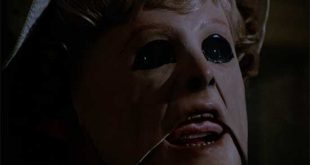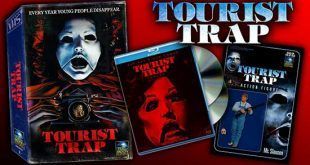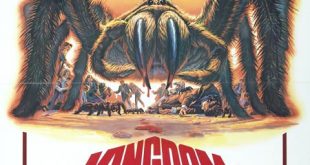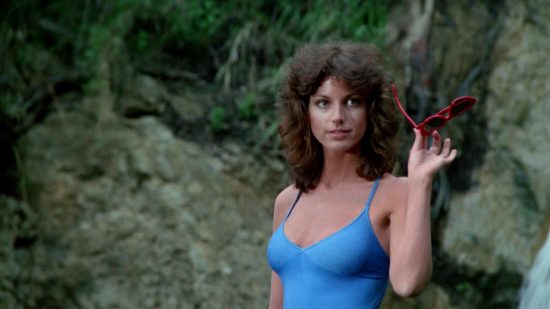
Robin Sherwood is well-known to horror film fans for her performance as Eileen in David Schmoeller’s 1979 psychological thriller Tourist Trap, and as Charles Bronson’s mute daughter in 1981’s Death Wish II who meets an untimely death on a metal fence(!). Having studied acting with Stella Adler, some of her fellow students include Bud Cort of Harold and Maude fame, and Sally Kellerman of M*A*S*H. After working as an actress for 14 years, Robin left Hollywood for France in the early Eighties where she mastered French and got to know la vie française et les coutumes françaises. Eventually, she found herself back here in the States where she educated herself on aesthetics, a subdiscipline of axiology – the study of quality or value. Having founded her own company, Freckle Farm, she ran it for seven years. I caught up with Ms. Sherwood to discuss her life and career.
Jonathan Stryker: Where were you born and what was your childhood like?
Robin Sherwood: I was born in Miami Beach, Florida. I went to the movies often when I was young. There were malls and one could walk to them, so I did that a lot. I remember seeing West Side Story and thinking that Natalie Wood was so beautiful. That film made a huge impression on me. I was really young and I used to read all those fan magazines. I remember Natalie talking about how hard she worked on that film, and that at night when the cast would go out to parties she instead would be working on her script. From that alone I understood that the life of an actress wasn’t all glamour. I mean, it’s work. You really have to work at it.
JS: Given the nature of film, it’s easy for a youngster to look up on the screen and think that everything that they’re seeing is all that it took to bring the story to life and have no idea of what went on behind the scenes. Nowadays, people have a much better insight into the making of films with all the supplemental extras on DVD and Blu-ray documentaries and behind-the-scenes footage. Back then, when all you really had to rely on were some short documentaries and publicity stills, it was probably easy to believe that moviemaking was a highly glamorous art form. The same can be said for television.
RS: Yes, absolutely. I liked television a lot, too. I feel like I know The Brady Bunch personally! I loved watching the reruns of I Love Lucy. Those were fabulous. In the 1970’s I liked Good Times and all those sitcoms, the comedies.
JS: Did you always want to act?
RS: Yes, I did. I stayed in Miami Beach until I was 14 and then I went away to school. I started working at 14, too, and when I was 17 I was working professionally. I was in the union and I was working as an actress. Oleg Cassini (a French-born American fashion designer noted for being chosen by Jacqueline Kennedy to design her state wardrobe in the 1960s – from Wikipedia.com) came down looking for models and I got my big break with him. He was still a name back then, so lots of models really wanted to work with him.
JS: The Internet Movie Database lists The Love Butcher as your first film, which is available on Blu-ray from Ronin Flix.
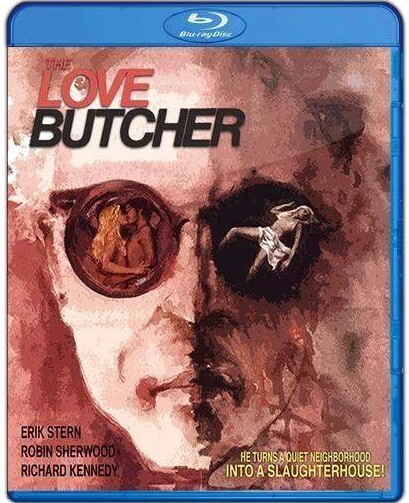
RS: Yes, I was still in college when I did that. We had work study, and I went to Hollywood for work study because I was an actress. I didn’t want to go back to school to graduate, but I did. I did my schooling in three years because I really wanted to get out so I could go to work. My mother instilled a high work ethic in me when I was young. She died when I was 10, so it was up to me to do everything on my own. I come from an entrepreneurial family and we always pulled ourselves up by our bootstraps, you know, we made things happen. I had a father who would say, “You’ve got to keep climbing and climbing and reaching higher.” I think that helped a lot, to be around that mentality.
JS: What is The Love Butcher about?
RS: Oh, it’s hysterically funny. I don’t think that it’s supposed to be funny, but it is!
JS: I love horror films like that, the ones that are trying to be serious and scary and they turn out to be very campy and silly. They have a unique charm that is all their own. I’ve always been a fan of the Italian horror film genre known as “giallo”, and they certainly have their fair share of films that are supposed to be very frightening but turn out to be extremely funny instead.
RS: Well, The Love Butcher is about a gardener who ends up murdering a lot of his clients. Naturally, he would do away with them with his gardening tools. It has become kind of a cult film which is so funny to me. In the film, the authorities look at all the tools and say something like, “Well, there must be a clue here somewhere!” It’s very funny because it’s so obvious. Of course, the audience already knows who the killer is. Really, I am nothing short of amazed that the film has the following that it has. It didn’t get released when it was made in 1975, but long after the time that I did Death Wish II.
JS: Loose Shoes is a film that you appeared in as a “Skateboarder from Hell”, and it’s a collection of fake trailers for movies that don’t really exist.
RS: Yes, I made that before I did Tourist Trap, even though the release year says 1980. It was closer to 1977.
JS: Outside Chance is a TV-movie that you appeared in with Yvette Mimieux in 1978.
RS: Yes, that’s actually the only TV project than I ever did. I didn’t want to do TV because I wanted to concentrate on film. It was fun to do and if I remember correctly it was the very first television project for Roger Corman at the time. It was unusual for an independent filmmaker to be producing a TV-movie that was airing on CBS.
JS: My favorite film of yours is Tourist Trap, the most frightening movie I think that has ever been made about mannequins. How did you get the role in this film?

RS: I had an agent who submitted an image of me with my arm resting on a skateboard. The photo was taken at my Coldwater Canyon home in Beverly Hills at the time. My agent was a really funny guy as he would measure his clients as if they were racehorses! You would go up to his office and he would have his clients listed along with the titles of the movie roles that they got. He had people like Esther Rolle, you know. Real giants in the field. And I remember thinking, “Oh, my God, if only that could happen to me! That would be really great.” And when Tourist Trap came around, he told me that he had this little film for me. Everyone who worked on that film was either the son or daughter of big-name filmmakers. He told me that it was going to be a lot of fun and that if I got the role it would be a really big break for me. So, I got the script and I worked with my acting coach, Jack Garfein, for about three hours. The next day I went to the audition and they offered me the part. Originally, they wanted a blonde, but they ended up hiring me.
JS: Do you recall when the movie was filmed?
RS: Well, it was hot and it was during late summer, so I want to say sometime in August 1978. It was shot in Griffith Park in Los Angeles.
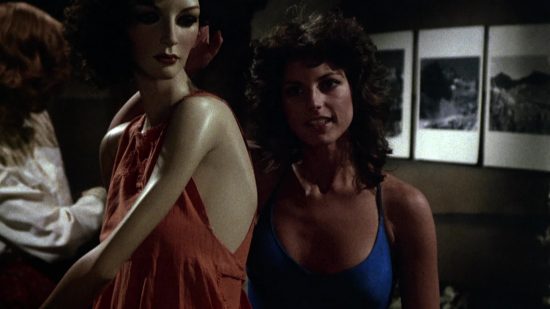
JS: The film was shot with a very low budget. Were there any re-shoots?
RS: Yes, we did re-shoots for about a week. I don’t remember exactly what they were, but we only re-shot pick-ups, not complete scenes. After that we had to go into the dubbing booth. We also shot in the interior of a very old house in Hollywood, and I doubt that it’s still there. That house was on Hollywood Boulevard. It was very old at the time. I recall in that scene when I come into the house and I see the mannequins sitting around, I then go into the other room and admire myself in the mirror. The script then calls for the mirror to be smashed, seemingly by itself. Well, they had someone behind the mirror with a hammer and they had to hit it from behind to smash it. I was told that it would be fine, that it was not real glass, but Chuck Connors was a pro in the business, and he warned me to look away before the glass was hit. Well, thank God he told me, because someone screwed up and it turned out to be real glass, and I ended up in the hospital with some shards that had to be removed. If I hadn’t looked away, I would have been in worse shape.
JS: That’s crazy! Do you recall where the waterfall and Slausen’s Lost Oasis were filmed?
RS: The waterfall was done in Malibu. I was married at the time to a producer, and he knew about moviemaking. Tanya Roberts, Jocelyn Jones and myself had to get into the water, and my husband made sure that I was fitted with a body suit which was very instrumental in keeping me warm! He knew that the water was going to be freezing. If you look closely in that scene, Tanya and Jocelyn have their arms around themselves as they try to keep warm, and you can tell visibly that they are cold. But, I was in the body suit and didn’t suffer the same fate as they did. Slausen’s was way out in Simi Valley. Chuck Connors was so tall! He towered over all of us. I really liked him a lot.
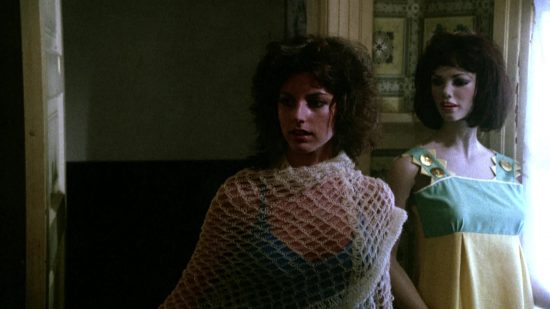

JS: I think he was excellent in that film. When the film was finished and released, did you go see it in a movie theater with an audience?
RS: Yes, I went and saw it when it was playing on Hollywood Boulevard. People in the audience recognized me as one of the actresses in the film. That’s always an odd experience, because people generally don’t expect to see that. But, it was mostly a young crowd, and they really enjoyed the film.
JS: After Tourist Trap, you appeared in the comedies Hero at Large and Serial, and then in what I consider to be Brian DePalma’s best film, Blow Out.
RS: I wanted to move into bigger films. I deliberately took smaller rolls in bigger films to establish myself. So, I went in to audition for Brian and it was all improve. In the scene that I did in the sound booth with the other actress at the studio in Los Angeles, I just remember Brian laughing as we rehearsed it.
JS: I love that film. Along with Tourist Trap, Blow Out has one of Pino Donaggio’s best scores.
RS: It’s beautiful.
JS: Death Wish II was your last film, correct?
RS: Yes, I was 28 when I made that and I had been working since I was 14, and I decided to move to France. I really got to know France.
JS: Why did you stop acting?
RS: I fell in love and having been well-educated and well-traveled I was really interested in aesthetics. So, I started to write, then I worked for Sotheby’s in Los Angeles. I did Jacqueline Kennedy Onassis’s estate, that was my first estate. It was a different world and I was surrounded by beautiful pieces.
JS: What is the scariest movie you’ve ever seen?
RS: The Haunting, the black and white film. I was a little girl when I saw it and I couldn’t sleep for weeks.
JS: My first interview was with Robert Wise and we talked exclusively about this film. I have to get to Ettington Park in England which doubled as the exterior of Hill House. The interiors were all shot in a studio. The Innocents with Deborah Kerr is another great ghost story in black and white.
RS: I haven’t seen that.
JS: Thank you for speaking with me!
RS: Oh, it was a delight!
Tourist Trap is a classic of 1970’s horror and is a must-see, especially during the month of October. It can be seen:
On Amazon Prime here
There is also a hilarious RiffTrax edition for die-hard fans that can be downloaded here
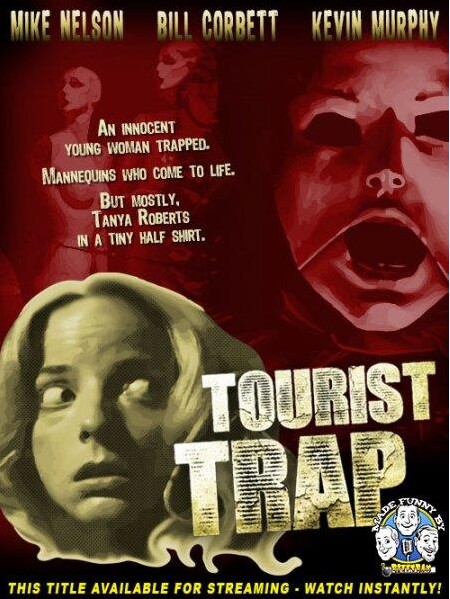
You can order the deluxe VHS box with a DVD and Blu-ray of the full 90-minute cut of the film, along with an action figure of Chuck Connors here

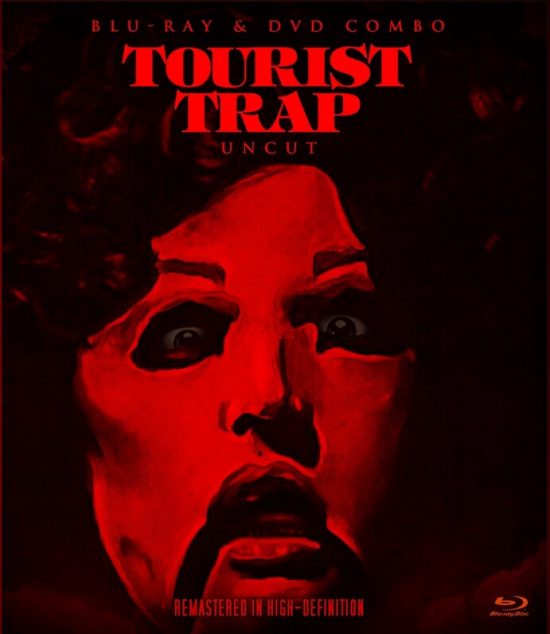
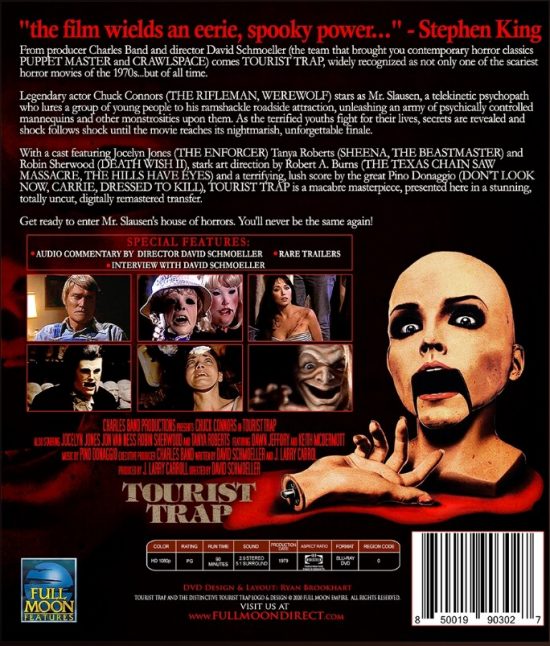
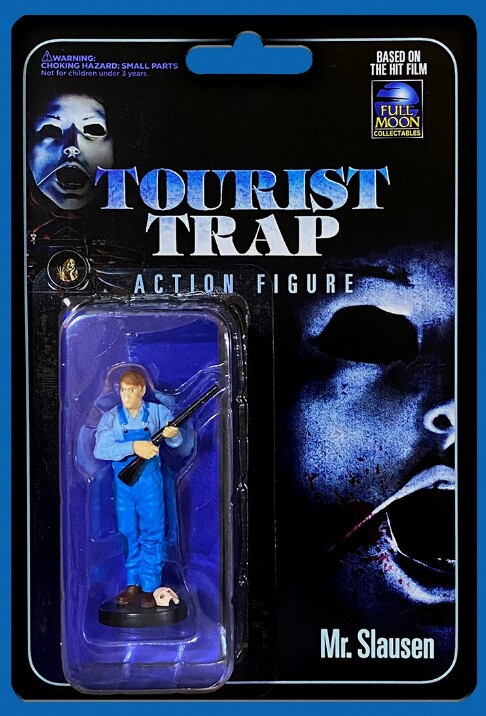
 Horror News | HNN Official Site | Horror Movies,Trailers, Reviews
Horror News | HNN Official Site | Horror Movies,Trailers, Reviews

